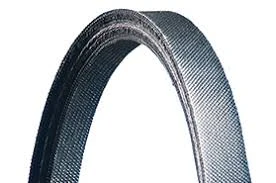- Arabic
- French
- Russian
- Spanish
- Portuguese
- Turkish
- Armenian
- English
- Albanian
- Amharic
- Azerbaijani
- Basque
- Belarusian
- Bengali
- Bosnian
- Bulgarian
- Catalan
- Cebuano
- Corsican
- Croatian
- Czech
- Danish
- Dutch
- Afrikaans
- Esperanto
- Estonian
- Finnish
- Frisian
- Galician
- Georgian
- German
- Greek
- Gujarati
- Haitian Creole
- hausa
- hawaiian
- Hebrew
- Hindi
- Miao
- Hungarian
- Icelandic
- igbo
- Indonesian
- irish
- Italian
- Japanese
- Javanese
- Kannada
- kazakh
- Khmer
- Rwandese
- Korean
- Kurdish
- Kyrgyz
- Lao
- Latin
- Latvian
- Lithuanian
- Luxembourgish
- Macedonian
- Malgashi
- Malay
- Malayalam
- Maltese
- Maori
- Marathi
- Mongolian
- Myanmar
- Nepali
- Norwegian
- Norwegian
- Occitan
- Pashto
- Persian
- Polish
- Punjabi
- Romanian
- Samoan
- Scottish Gaelic
- Serbian
- Sesotho
- Shona
- Sindhi
- Sinhala
- Slovak
- Slovenian
- Somali
- Sundanese
- Swahili
- Swedish
- Tagalog
- Tajik
- Tamil
- Tatar
- Telugu
- Thai
- Turkmen
- Ukrainian
- Urdu
- Uighur
- Uzbek
- Vietnamese
- Welsh
- Bantu
- Yiddish
- Yoruba
- Zulu
Nov . 26, 2024 15:49 Back to list
Understanding the Importance of Timing Belt Maintenance and Replacement in Vehicles
Understanding Timing Belt Use Importance, Maintenance, and Replacement
The timing belt is a crucial component of an internal combustion engine. It plays a vital role in ensuring that the engine's various parts work harmoniously, managing the timing of the engine’s valves and pistons. The proper function of the timing belt is essential; if it fails, it can lead to severe engine damage, requiring costly repairs. Thus, understanding the importance of timing belt use, its maintenance, and replacement is crucial for any vehicle owner.
Importance of Timing Belts
The timing belt coordinates the movement of the crankshaft and the camshaft. In a standard four-stroke engine, the crankshaft turns twice for every full revolution of the camshaft. The timing belt ensures that the opening and closing of the engine's valves are synchronized with the movement of the pistons, allowing for optimal engine performance.
The use of a timing belt instead of a timing chain is primarily for noise reduction and weight savings. Timing belts are generally made from rubber, reinforced with fiber, and are designed to withstand the rigors of constant movement and varying temperatures. This design choice also makes them less durable than metal timing chains, which can last significantly longer because of their robustness.
Signs of Timing Belt Wear
As with any mechanical component, aging and wear will eventually take their toll on the timing belt. Regular inspection is vital to prevent unexpected failure. There are several signs that could indicate potential timing belt issues
1. Squeaking or Ticking Noises Unusual sounds coming from the engine could be a sign that the timing belt is worn out or misaligned. 2. Oil Leaks Oil leaking from the front of your engine can weaken the timing belt, leading to possible failure.
3. Visible Cracks or Glazing During inspections, if you notice cracks or a shiny, glazed appearance on the belt, it is time for a replacement.
timing belt use

Maintenance Tips for Timing Belts
To maximize the life of your timing belt, regular maintenance is essential. Here are some tips
- Follow Manufacturer Guidelines Vehicle manufacturers provide specific recommendations regarding timing belt replacement intervals, often ranging from 60,000 to 100,000 miles depending on the vehicle make and model. Adhering to these guidelines is crucial.
- Routine Inspections Have your timing belt inspected regularly by a qualified mechanic. They can ensure that the belt, along with other related components like tensioners and idler pulleys, are in good condition.
- Check Related Components It’s often recommended to replace your water pump when you replace your timing belt. Since the labor involved in accessing the timing belt is significant, it may be cost-effective to address related components at the same time.
Replacement of Timing Belts
When it comes to the timing belt replacement, it is essential to ensure that the job is done correctly. Faulty installation can lead to severe engine damage, just as a worn-out belt can. Many car manufacturers suggest replacing the timing belt as part of an overall engine maintenance schedule.
Choosing a certified mechanic with experience in your specific vehicle model is crucial. They will have the right tools and knowledge to ensure a proper installation, aligning all the components correctly to avoid issues in the future.
Conclusion
In summary, the timing belt is a small yet profoundly important component of your vehicle's engine. Its primary role in synchronizing the movement of the crankshaft and camshaft cannot be overstated. Regular maintenance and timely replacement of the timing belt can save vehicle owners from significant engine damage and costly repairs. Understanding the signs of wear and following the manufacturer’s recommendations can lead to a longer lifespan for both the timing belt and your engine, ensuring a smooth and reliable driving experience for years to come.
-
Korean Auto Parts Timing Belt 24312-37500 For Hyundai/Kia
NewsMar.07,2025
-
7PK2300 90916-T2024 RIBBED BELT POLY V BELT PK BELT
NewsMar.07,2025
-
Chinese Auto Belt Factory 310-2M-22 For BMW/Mercedes-Benz
NewsMar.07,2025
-
Chinese Auto Belt Factory 310-2M-22 For BMW/Mercedes-Benz
NewsMar.07,2025
-
90916-02660 PK Belt 6PK1680 For Toyota
NewsMar.07,2025
-
drive belt serpentine belt
NewsMar.07,2025

